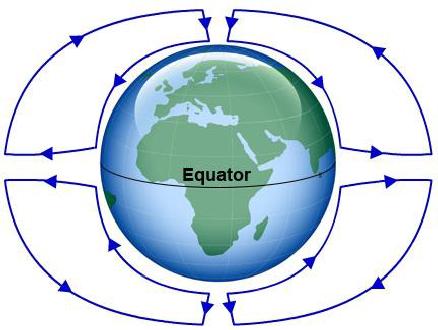
pressure. The heavier, denser air from the north and south poles moves along the
earth s surface towards the equator while the lighter, warmer air moves towards the
poles.
As this air moves, it does not travel in a straight line from equator to pole, because it is
affected by the following:
The earth's rotation
Uneven heating over water and land
Seasonal and daily temperature changes
The earth's rotation causes the air to flow to the right of its normal path in the northern
hemisphere and to the left in the southern hemisphere, as seen in Figure 1-2. This
explains why in the northern hemisphere weather patterns and high- and low-pressure
systems generally move from west to east.
Figure 1-2 -- Earth s rotation.
Cyclones (Low-Pressure Systems)
In a low-pressure system, barometric pressure decreases toward the center. The wind
flow around the system is counterclockwise in the northern hemisphere, as shown in
Figure 1-3. A low-pressure system is generally associated with unfavorable flying
conditions because of low clouds, restricted visibility, and strong gusty winds.
Hurricanes, typhoons, and tropical storms are examples of severe low-pressure
systems.
1-8

